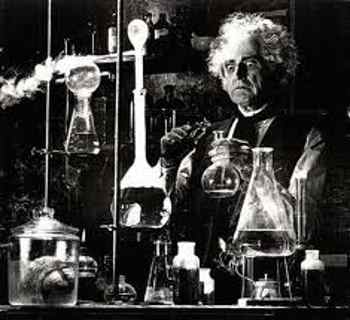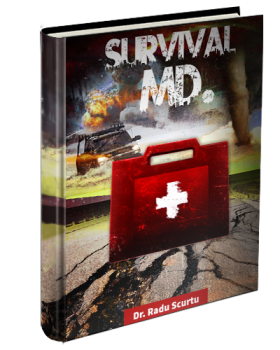Making Penicillin at Home
Hey Prepper Nation,
Accumulating medications may be simple when it comes to finding aspirin and other non-prescription drugs but prescription drugs will be hard to get for those who can’t write their own prescriptions or don’t have a relationship with an understanding physician who can. Antibiotics are a case in point.
I consider this a major issue because there will be a much larger incidence of infections when people have to fend for themselves, and injure themselves as a result. Simple cuts and scratches from chopping wood can begin to show infection, in the form of redness, heat and swelling, within a relatively short time. Treatment of infections at an early stage improves the chance that they will heal quickly and completely. However, many preppers, being the rugged type, are most likely to ignore the problem until it get much worse and spreads to their entire body, causing problems that could eventually be fatal. Having antibiotics readily available would allow them to deal with the issue until medical help (if available at all) arrives.
What Are Good Sources for Antibiotics?
Of course, I’ve mentioned using aquarium antibiotics as a simple and relatively cheap way to get good quantities of various antibiotics. Since the only ingredient in these medications is the antibiotic itself, it’s a perfectly reasonable alternative to begging your physician for a bunch of prescriptions. Once in a while, I get someone who wants to know how to make penicillin (it’s just bread mold, ain’t it?). It’s true that penicillin is a by-product of a fungus known as penicillium and the fungus will indeed grow on bread and fruit. In 1942, A moldy cantaloupe in Peoria, Illinois was found to have a strong version of it. Most of the world’s supply of the stuff in the 1940s came from cultures of the fungus on that cantaloupe.
This is exactly what you will want to be if a collapse situation occurs.
This article will tell you how you can actually make Penicillin at home. It sure as heck isn’t easy, and WE don’t even have all the stuff necessary to produce it. But I’m going to tell you the process anyway to illustrate an important point.
Let me say, once again, that this information is only for use in a post-collapse scenario, so don’t go and convert that meth lab of yours to an antibiotic factory. The practice of medicine without a license is illegal just about everywhere, and home laboratories are dicey legal subject matter.
Penicillin is a by-product of the Penicillium fungus, but the thing is, it’s a by-product of a Penicillium fungus that’s under stress! So you have to grow the fungus, and then expose it to stresses that will make it produce Penicillin.
First you need to produce a culture of the penicillium fungus. – Amicrobiological culture is a method of multiplying microscopic organisms by letting them reproduce in a certain environment under controlled conditions
One of the most important things to know is that it is easy for other critters to contaminate your penicillium culture, so use sterile techniques at all times or you will likely wind up with something entirely different!
Step 1
Expose a slice of bread or citrus peel or a cantaloupe rind to the air at 70 deg. F until a bluish-green mold develops. Takes a few days….
Cut two fresh slices of whole wheat bread into ½ inch cubes and place in a 750ml Erlenmeyer flask (the flask on the right in the above picture) with a non-absorbent plug. One thing you might not know is that a lot of bakeries put a substance called a mold inhibitor on bread. This stuff, which is called mycoban, is going to suppress the fungus, so you should probably use bread that you baked yourself. Sterilize the flask and contents in a pressure cooker for at least 15 minutes at 15 pounds. An alternate method is to place in an oven at 315 deg F for one hour.
In a sterile fashion, transfer the fungus from the bread or fruit peel into the flask containing the bread cubes. Allow the cubes to sit in the dark at 70 deg F for 5 days. This is called incubation. That’s the easy part….
RELATED : FISH ANTIBIOTICS IN A COLLAPSE
Step 2 This is where it gets complicated….
Prepare one liter of the following solution:
Lactose Monohydrate 44.0 gm
Corn Starch 25.0 gm
Sodium Nitrate 3.0 gm
Magnesium Sulfate 0.25 gm
Potassium MonoPhosphate 0.50 gm
Glucose Monohydrate 2.75 gm
Zinc Sulfate 0.044 gm
Manganese Sulfate 0.044 gm
You’ll obviously need a scale that measures very small amounts, these are called gram scales and you can find them online. By the way, looking some of these ingredients up, I could find them at chemical supply houses, but they usually sell them in amounts of 500 gm or more.
Anyhow, dissolve in the order I listed them in 500ml of cold tap water and then add more cold water to complete the liter.
Adjust pH to 5.0-5.5 using HCL(hydrochloric acid). You’ll need a ph test kit, they sell them at pet shops and garden supply stores Fill containers with a quantity of this solution. Only use enough so that when the container is placed on its side the liquid will not touch the plug.
Sterilize the containers (use glass) and solution in a pressure cooker or stove just like you did before. When it cools, scrape up about a tablespoon of the fungus from the bread cubes and throw it into the solution.
Allow the containers to incubate on their sides at 70 deg F for 7 days. It’s important that they are not moved around. If you did it correctly, you’ll have Penicillin in the liquid portion of the media.Filter the mixture through a coffee filter or something similar, plug the bottles and refrigerate immediately.
Step 3
To extract the penicillin from the solution:
Adjust the cold solution to pH 2.2 using ( .01 %) HCL. Mix it with cold ethyl acetate in a separatory funnel (that’s a funnel with a stopcock; you can find all these items at chemistry glass suppliers) and shake well for 30 seconds or so.
Drain the ethyl acetate (which should be on the bottom) into a beaker which has been placed in an ice bath and repeat the process. Add 1% potassium acetate and mix. Now you want the ethyl acetate to evaporate off. This can be induced by a constant flow of air over the top of the beaker, say from a fan. When it dries, the remaining crystals are a mixture of potassium penicillin and potassium acetate.
There you have it, you have put together a laboratory and made Penicillin! You are now officially a mad scientist! Seriously, After looking at all this a few times, I’m guessing that making Penicillin at home isn’t that workable, after all. However, it does make a point. If there’s a collapse, you know there is no way that anyone will be able to reliably produce antibiotics.
Survival MD (Best Post Collapse First Aid Survival Guide Ever)
Backyard Innovator (A Self Sustaining Source Of Fresh Meat,Vegetables And Clean Drinking Water)
Blackout USA (EMP survival and preparedness)
Conquering the coming collapse (Financial advice and preparedness )
Liberty Generator (Build and make your own energy source)
Backyard Liberty (Easy and cheap DIY Aquaponic system to grow your organic and living food bank)
Bullet Proof Home (A Prepper’s Guide in Safeguarding a Home )
Family Self Defense (Best Self Defense Strategies For You And Your Family)
Sold Out After Crisis (Best 37 Items To Hoard For A Long Term Crisis)
SOURCE : survivalblog.com


